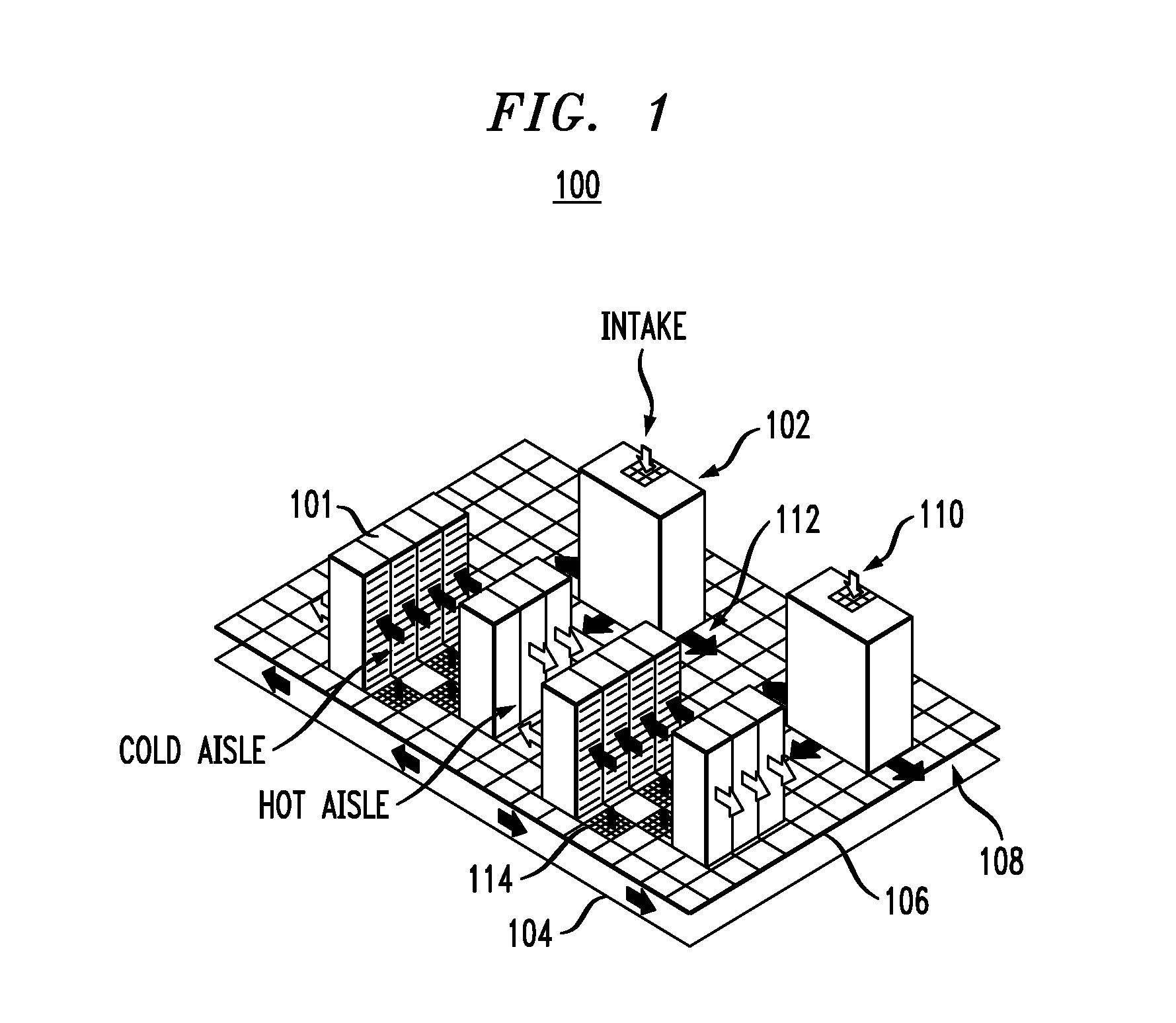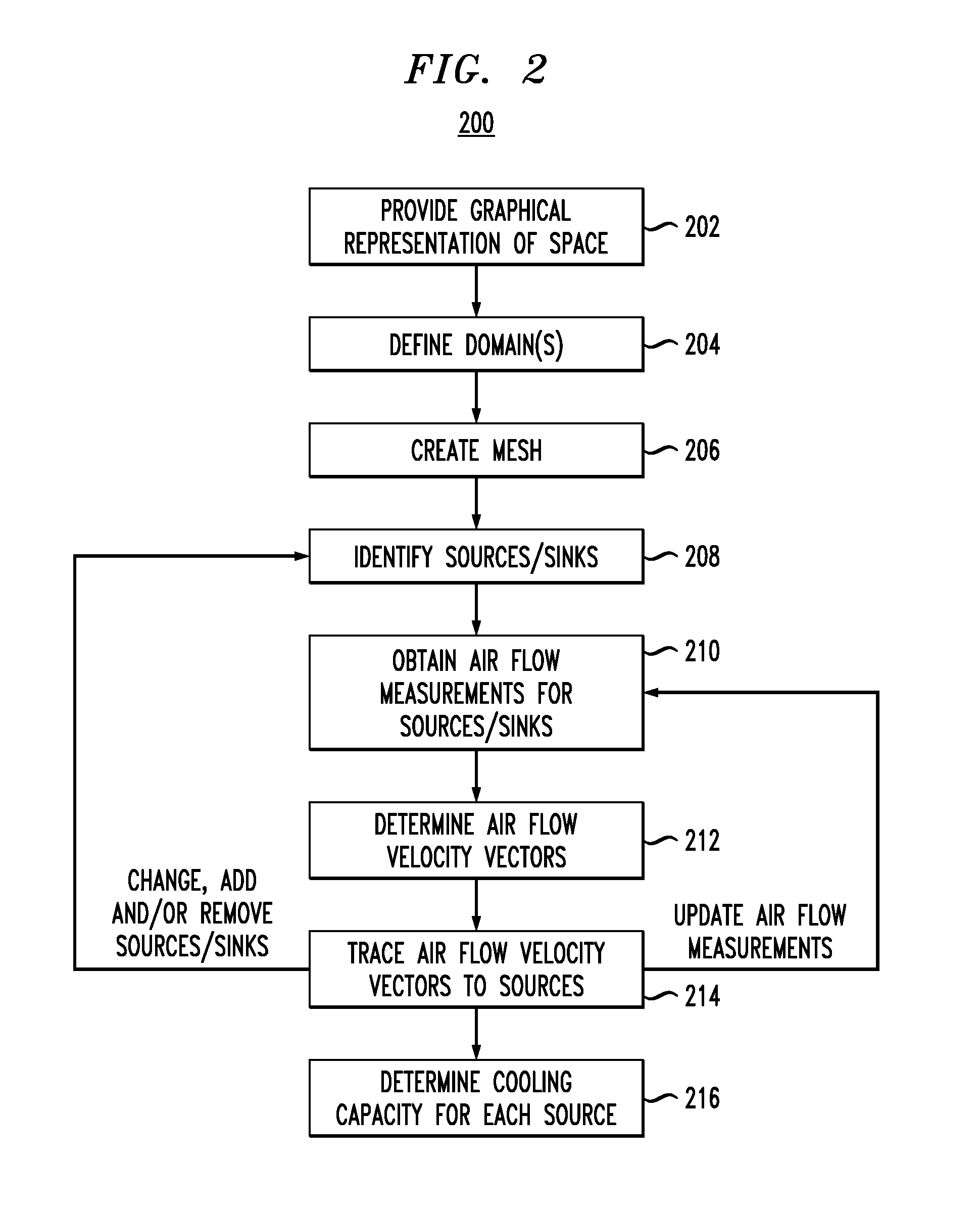Methods and Techniques for Creating and Visualizing Thermal Zones
- Summary
- Abstract
- Description
- Claims
- Application Information
AI Technical Summary
Benefits of technology
Problems solved by technology
Method used
Image
Examples
Embodiment Construction
[0019]Presented herein are techniques for dynamically creating and visualizing thermal zones, which enables better provisioning and a more efficient usage of cooling for data centers. It is notable that while the instant techniques are described in the context of a cooling system of a data center, the concepts presented herein are generally applicable to cooling and / or heating systems in general.
[0020]FIG. 1 is a diagram illustrating exemplary data center 100. Data center 100 has server racks 101 and a raised-floor cooling system with air conditioning units (ACUs) 102 (which may also be referred to as computer room air conditioners (CRACs)) that take hot air in (typically from above through one or more air returns in the ACUs) and exhaust cooled air into a sub-floor plenum below. Hot air flow through data center 100 is indicated by light arrows 110 and cooled air flow through data center 100 is indicated by dark arrows 112. In the following description, the data center above the sub...
PUM
 Login to View More
Login to View More Abstract
Description
Claims
Application Information
 Login to View More
Login to View More - R&D
- Intellectual Property
- Life Sciences
- Materials
- Tech Scout
- Unparalleled Data Quality
- Higher Quality Content
- 60% Fewer Hallucinations
Browse by: Latest US Patents, China's latest patents, Technical Efficacy Thesaurus, Application Domain, Technology Topic, Popular Technical Reports.
© 2025 PatSnap. All rights reserved.Legal|Privacy policy|Modern Slavery Act Transparency Statement|Sitemap|About US| Contact US: help@patsnap.com



